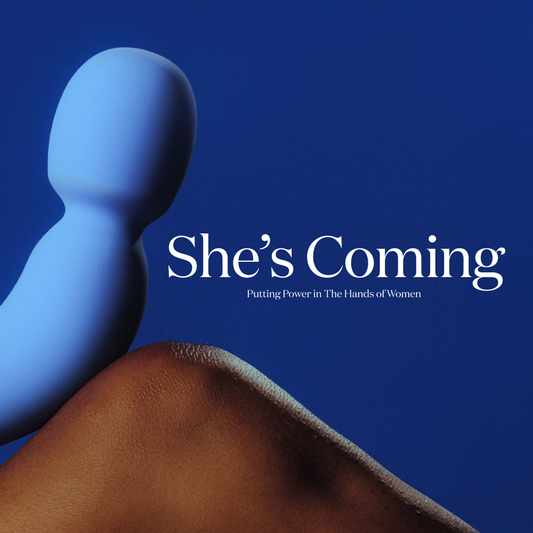Every now and then, a friend will message me on Facebook and wonder if they might be non-binary. They tell me how they don’t fully feel like either a man or a woman, and how they like things that usually aren’t associated with their assigned gender at birth, but they’re not sure if they’re just uncomfortable with traditional gender roles or if it’s something else.
I feel for them, because it was just a few years ago that I asked myself the same question.
I first heard the terms “genderqueer” and “non-binary” on Tumblr around the time I turned 30. Prior to that, I always felt androgynous, but then I watched a bunch of YouTube videos where people described being non-binary as either being both a boy and a girl at the same time, or being somewhere in between the two. “There’s a word for that?” I thought to myself.
I was hesitant to immediately call myself non-binary because I didn’t want to rush to conclusions. After months of exploration, though, I finally felt comfortable enough to come out publicly as a non-binary trans person. (Many consider the term “transgender” to be an umbrella term for anyone who does not identify with their assigned gender at birth, which would include non-binary people. Some non-binary people don’t consider themselves transgender. It all depends on the individual.)
Even then, I still sometimes second-guess myself and wonder if I’m the special snowflake that trolls on the internet think I am. The road to self-discovery is a long and often painful journey, full of confusion and frustration, whether you’re non-binary, trans, or still just not sure. Fortunately, there are ways to make the journey less painful.
See a Gender Therapist
Gender therapists are always there if you have trouble figuring out your gender identity. “Every therapist is different,” Rafi Daugherty of the Colorado nonprofit organization
Queer Asterisk told me over the phone, “but I think most of us talk to the client about their history, and what their self-concept was growing up, how that may have shifted or changed over time, what are the messages they got about gender and sexuality as a child or as a teenager.” This exploration “helps us discover if there's any shame or fears that might be holding them back from feeling comfortable with whatever their authentic gender is."
Queer Asterisk provides mental health services to LGBTQ people, including gender therapy. Daugherty, a trans man, will sometimes use his own experience to help clients with their own journeys to self-discovery. “When I feel like it’s clinically relevant,” he told me, “I will bring up something that I went through and usually preface it with, ‘This may not be relevant to you, but this was my experience.’”
"What are your fears about facing the truth about yourself?"
Gender therapist Dara Hoffman-Fox will also sometimes take this approach. “As therapists, we're supposed to always be discerning about how much personal information we share,” they told me over Skype recently. “And yet I feel like in this case, especially with
nonbinary...it seems like some self-disclosure can be really helpful” to those who are questioning their gender.
Hoffman-Fox has been a gender therapist for 12 years. They have a YouTube channel where they answer viewers’ questions about gender as well as share thoughts about their own gender discovery journey. Hoffman-Fox is also the author of the book You and Your Gender Identity: A Guide to Discovery, which they wrote for both clients and people throughout the world that can’t see Hoffman-Fox in Colorado one-on-one. They’ll often send free PDF copies of their book to clients to give each client a place to start.
“That's really helpful because some of them might start with the chapter about what are your fears about facing the truth about yourself,” Hoffman-Fox told me. “Some of them might already be further along than they thought, and they want to talk about experimenting and exploring and taking more what feels like risks. But they need to take those risks.”
I used to see a gender therapist through the Transgender Insititute, which offers online counseling sessions for those who can’t find a local gender therapist. During one of our sessions, I mentioned that I started wishing I looked more like a woman in my 20s before I knew anything about being transgender. I also told my therapist that while I’m not planning on going on hormone replacement therapy or having surgery, I really want to get rid of my facial and body hair. My therapist replied, “Well, you’re definitely not cis. Cis men don’t think about looking more like women.” It really helped me feel more comfortable identifying as a non-binary trans person.
Find Support Both Online and Offline
Besides gender therapists, there are support groups—both online and in real life—you can use during your journey. “That’s sometimes a really good place to start,” Daugherty told me. “What are some of the words people are using? Do any of these resonate with me? Can I find people in support type groups who I can relate to or who can help me along my journey?”
The best thing you can do is to take your time and give yourself room to explore.
Hoffman-Fox agrees. “ can go online or find local support groups so that they can actually try to see what it's like to be themselves,” they told me, “whatever that feels like to them in a group that they know or with a person that they know they can just do that with, without judgment, without hesitation.”
Take Your Time to Explore
The best thing you can do is to take your time and give yourself room to explore. “We’re in such a busy society that sometimes just sitting and journaling and kind of feeling what feels good to us is really rough,” Daugherty told me. “We don't have a lot of time to just sit in our own experience of things.”
I always tell my friends that I took baby steps with my journey. First I shaved off my beard, then grew my hair long, started wearing nail polish, and bought clothes from the women’s section. I also wrote short bios of myself in third person with different names and pronouns until I finally found the right combination: “Tris Mamone is a freelance writer. They have written for such publications as….” Each step made me feel more comfortable with myself, and I suggest to my friends that they try out what worked for me.
Hoffman-Fox also recommends doing little things that feel gender-affirming. “You might not know yet it feels gender affirming,” they say, but small changes might feel like “a tolerable window of risk for yourself.” Then, little by little, as you learn more about what feels right, “it'll kind of feel like that snowball effect of wanting to, regardless of the fear, be able to try to move forward towards that authentic, integrated self.”




















































